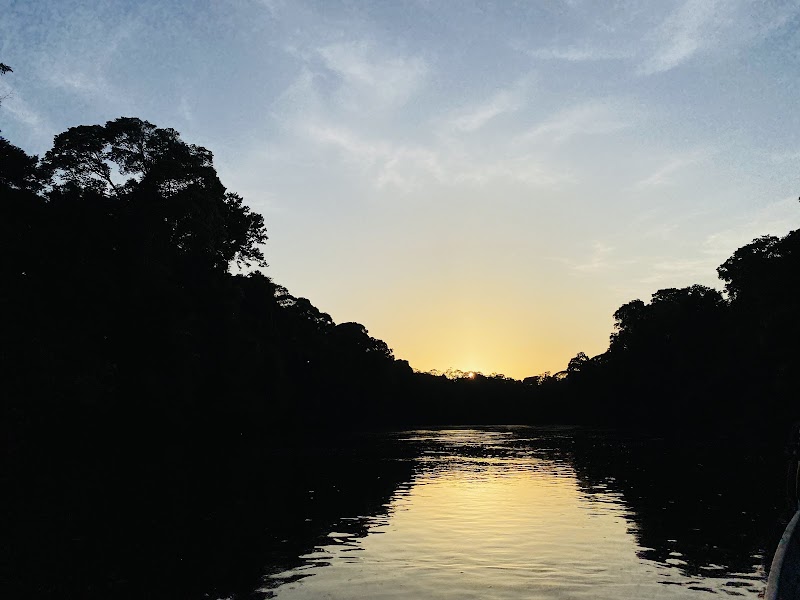Carnival Energy: Experience Cayenne Carnival in French Guiana
Cayenne Carnival lights up French Guiana with vibrant costumes, pulsating music, and deep-rooted cultural rhythms. This guide maps out the essentials for experiencing the festival firsthand, blending practical tips with immersive insights to help you dive into one of South America's most spirited celebrations.
Stay Hydrated in Tropical Heat
Temperatures often soar beyond 30°C (86°F) with high humidity, making hydration crucial while you explore the carnival streets.
Wear Sturdy, Comfortable Footwear
Expect hours of standing and walking on urban streets, sometimes uneven or wet; closed shoes with good grip ensure foot safety and comfort.
Protect Against Sun and Rain
Bring sunblock and a light, quick-dry rain jacket—rain showers appear unpredictably, and sun exposure is intense during midday.
Plan Your Arrival and Departure
Public transport and road closures increase during parade days—arrive early and be prepared for crowds to avoid delays.
Carnival Energy: Experience Cayenne Carnival in French Guiana
Every year, Cayenne, the vibrant capital of French Guiana, bursts into color and rhythm as it hosts the Cayenne Carnival. This event is more than just a festivity; it’s a full-scale cultural adventure, blending Creole, Indigenous, and Afro-Caribbean traditions into a dynamic parade of life and expression. From late January through February, the city transforms into a pulse of music, costumes, and celebration under the tropical skies.
The heart of the carnival beats strongest on the parade days, when floats glide through streets lined with eager spectators, and dancers in elaborate costumes move with infectious energy. Expect to be pulled into the mix as the drums call out, the brass blares, and every corner reveals a new spectacle. The route primarily traces through downtown Cayenne, offering easy access for visitors and plenty of spots to join the crowd.
Planning your visit? Cayenne's tropical climate plays a crucial role: prepare for warm, humid days with occasional showers that the dense cloud cover sometimes brings in the late afternoon. Light, breathable clothing suits the weather best, and comfortable shoes are non-negotiable given the hours you'll spend on your feet between parades, street parties, and performances.
The carnival is a family-friendly event, but its late-night parties and all-night dances cater especially to those ready to soak in the local culture long after the sun sets. Food stalls selling local delights such as grilled meats, accras (savory fritters), and fresh tropical fruits offer practical, tasty refueling points.
Culturally, this carnival is fiercely itself — a celebration that commands respect and engagement rather than just observation. It’s not about ‘‘escaping’’ to a party but stepping into a living, breathing community’s story. Vendors and performers are often happy to share context and explain traditions, so interaction enhances the experience.
The rhythms and colors of Cayenne Carnival are a call to move, embrace, and experience French Guiana’s spirit head-on. It’s an adventure that offers as much depth as it does vivacity—one that leaves you informed, energized, and connected to a place and its people in a way few festivals achieve.
Nearby Trips
All Adventures
Boat Charters
Water Activities
Adventures near Cayenne
Discover the unique and memorable adventures that make Cayenne special.
Frequently Asked Questions
When exactly is the Cayenne Carnival held each year?
The carnival typically runs from late January through February, culminating in several key parade days that coincide with the days leading up to Mardi Gras.
Is the Cayenne Carnival family-friendly?
Yes, many parts of the carnival are suitable for families, especially daytime parades and cultural events. However, some late-night street parties are more adult-oriented.
What languages are commonly spoken at the carnival?
French is the official language, but you’ll also hear Creole and various indigenous languages. Many vendors and performers appreciate when visitors use basic French greetings.
Are there any local wildlife encounters around Cayenne during the carnival season?
While the carnival itself is urban, nearby parks and the coastline provide chances to spot colorful birds like toucans and parrots, especially in quieter morning walks.
What payment methods work best for buying food and souvenirs at the carnival?
Cash is king at street stalls and smaller vendors. ATMs are available in the city but secure your daily cash quota beforehand.
Are there any environmental protections in place during the carnival?
Organizers promote waste recycling and discourage single-use plastics. Visitors are encouraged to dispose of trash responsibly to protect the local environment.
Recommended Gear
Comfortable Walking Shoes
To handle hours of walking and standing on city streets without discomfort.
Reusable Water Bottle
Essential for staying hydrated in the humid tropical climate.
Sunblock
Protects skin from intense equatorial sun during daytime festivities.
Light Rain Jacket or Poncho
Useful for sudden tropical downpours common in the carnival season.
Local Insights
Hidden Gems
- "The lesser-known botanical garden near the parade route provides a quiet break from the crowds."
- "Look for local community workshops teaching traditional mask-making and dance."
Wildlife
- "Tropical birds like the red-throated piping guan can sometimes be seen resting on city trees."
- "Occasional sightings of the endemic giant river otter near the nearby mangrove edges."
History
"Cayenne Carnival reflects a blend of Indigenous, African, and European influences dating back centuries, preserved through dance, music, and ritual performances."

